Related Research Articles

Stefania Sandrelli is an Italian actress, famous for her many roles in the commedia all'Italiana, starting from the 1960s. She was 14 years old when she starred in Divorce Italian Style as Angela, the cousin and love interest of Ferdinando, played by Marcello Mastroianni.

Jean Coralli was a French ballet dancer and choreographer, best known for collaborating with Jules Perrot in creating Giselle (1841), the quintessential Romantic ballet of the nineteenth century.

Ivo Garrani was an Italian actor and voice actor. In films since 1952, Garrani is possibly best known for his role as Prince Vajda in Mario Bava's Black Sunday (1960).
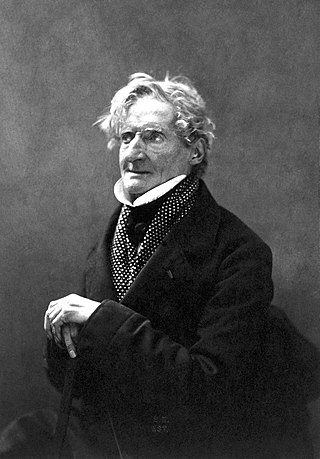
Pierre-Luc-Charles Cicéri was a leading French set designer of his era.
Accademia Nazionale d'Arte Drammatica Silvio D'Amico is a national drama school in Rome, Italy. Founded in 1936 by the theatrical theorist, critic, and writer Silvio D'Amico, the academy is the only state school for the training of actors and directors. Funded jointly by the Ministry of Education, Universities and Research (MIUR) and the Ministry of Cultural Heritage and Activities, the Academy grants academic degrees equivalent to Bachelor of Arts as well as master's degrees. Its value comes from being the only school in Italy to be recognized by the Prime Minister / Department of Performing Arts and the Ministry of University and Scientific and Technological Research.
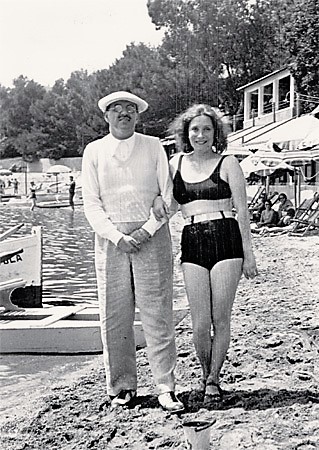
Silvio D'Amico was an Italian theatre critic, journalist, and theorist of Italian theatre. Not a Fascist himself, D'Amico was the major theatre critic during the ventennio, the twenty years (1922–1945) of Fascist rule in Italy. He was the first editor of the nine-volume Enciclopedia dello Spettacolo, published between 1954 and 1965, that covered theatre, music, cinema, and dance. Most notably, he held an eminent position in theatrical study in Italy, giving his name to the Silvio D'Amico National Academy of Dramatic Art in Rome, Italy's most prestigious drama school.
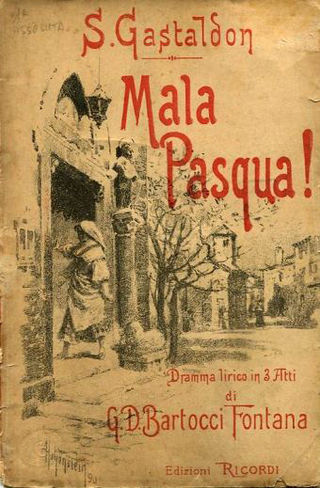
Mala Pasqua! is an opera in three acts composed by Stanislao Gastaldon to a libretto by Giovanni Domenico Bartocci-Fontana. The libretto is based on Giovanni Verga's play, Cavalleria rusticana which Verga had adapted from his short story of the same name. Mala Pasqua! premiered on 9 April 1890 at the Teatro Costanzi in Rome, six weeks before Pietro Mascagni's opera Cavalleria rusticana which was also based on Verga's play. Bartocci-Fontana's libretto adds some elements that were not in Verga's original and expands on others. The name of the Santuzza character was also changed to Carmela, but the basic plot and setting remain the same. Its title refers to the curse which Carmela places on Turiddu, the lover who had spurned her: "Mala Pasqua a te!". Following its Rome premiere, Mala Pasqua! had a few more performances in Perugia and Lisbon, but it was completely eclipsed by the phenomenal success of Mascagni's opera. After the 1891 Lisbon run it was not heard again until 2010 when it was given a semi-staged performance in Agrigento, Sicily.
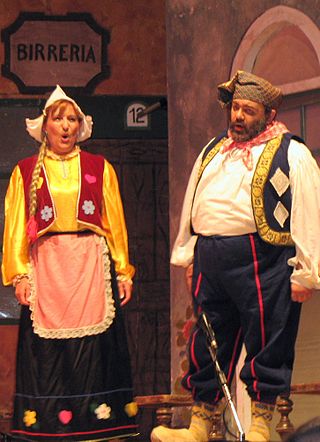
Carlo Lombardo dei Baroni Lombardo di San Chirico known also under the composer-pseudonyms Léon Bard, Leo Bard, Leblanc and M. Fernandez, was an Italian operetta impresario, comedian, librettist, publisher and "composer" of pasticcio productions of other composers' music. He is regarded in Italy as the father of the late 19th and early 20th Century revival in Italian operetta.
The Italian publishing house Editoria & Spettacolo di Maximilian La Monica I.i. was established in 2001 in Rome. Under the initiative of Maximilian La Monica, they specialize in the publication of theater and spectacle editions.

Fiorenzo Carpi was an Italian composer and pianist, probably best known for the "Pinocchio" theme.

The Grolla d'oro is one of the oldest Italian film awards.

Anchise Brizzi was an Italian cinematographer.
Giancarlo Zagni was an Italian director and screenwriter.
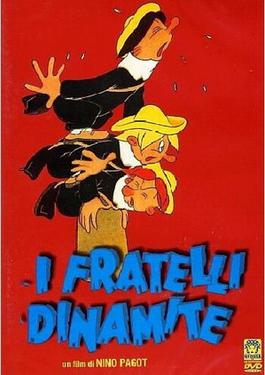
I fratelli Dinamite is a 1949 Italian animation film directed by Nino and Toni Pagot.

Giuliana Lojodice is an Italian former stage, television and film actress.
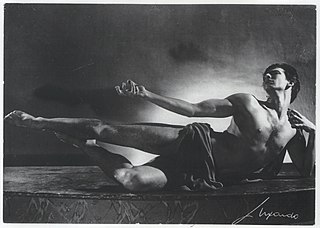
Guido Lauri was an Italian dancer, actor, choreographer, ballet master, company director.
Toni Pagot was an Italian comics artist and animator.
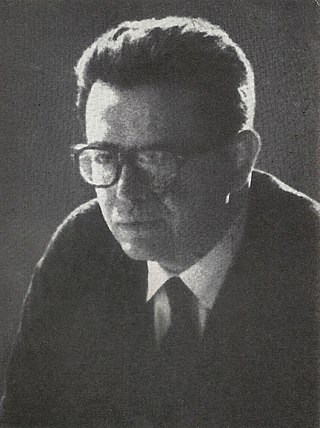
Luigi Squarzina was an Italian theatre dramatist and director.
Vincenzo Fioravanti was a prolific Italian opera composer active in Naples. He composed 39 operas, of which 34 were performed in his lifetime. Like his father, Valentino Fioravanti, he specialised in the opera buffa genre, but he also composed sacred music including two oratorios during his time as maestro di cappella of Lanciano Cathedral (1839–1843).
Luigi Ferdinando Casamorata was an Italian composer and music critic.
References
- ↑ Couch, Nena (Mar 1999). "Reviewed work(s): A Discography of 78 RPM Era Recordings of the Horn: Solo and Chamber Literature with Commentary by Amy McBeth". Notes. Music Library Association. 55 (3): 640. doi:10.2307/900417. JSTOR 900417.
- ↑ Bianconi, Lorenzo; Pestelli, Giorgio; Singleton, Kate (2002). Opera on stage . University of Chicago Press. p. 302. ISBN 0-226-04591-9.
- ↑ Farrell, Joseph; Puppa, Paolo (2006). A history of Italian theatre. Cambridge University Press. p. 269. ISBN 0-521-80265-2.
- ↑ "Research Tools for Theater and Performance Studies". Library of the University of California Berkeley. 2010-07-22. Retrieved 16 October 2010.
- 1 2 Rubin, Don (2001). The world encyclopedia of contemporary theatre. Vol. 1. Taylor & Francis. p. 6. ISBN 0-415-05928-3.
- 1 2 3 4 5 6 "Enciclopedia dello spettacolo, 11 voll. fondata da Silvio D'Amico Roma: Le Maschere, 1954-1968". examenapium.it (in Italian). Retrieved 16 October 2010.
- 1 2 3 "Conversazione sull'Enciclopedia dello Spettacolo con Alessandro D'Amico e Luigi Squarzina". unile.it (in Italian). Retrieved 15 October 2010.
- 1 2 3 "Selected Dictionaries and Encyclopedias for Theater". Yale University Library. Archived from the original on 21 June 2010. Retrieved 16 October 2010.